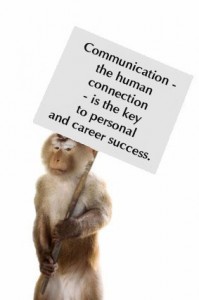COMMUNICATION SKILLS
Communication skills
”…The notion that people create the “truth” they create and which they then act upon is not created in the conscious, rational parts of the mind but in the unconscious part, in the internal dialogue…”
(from Clear Leadership by Gervase R. Bushe)
THE KEY ELEMENT
How we communicate when meeting others is the key element. Communication consists of many different parts and levels that must interact and together form the basis for how we interpret and relate to the world around us and how the world perceives and relates to us.
In a meaningful communication, we are in control of the map and compass. We’re in control of our thoughts, feelings and how to communicate. When we’re centred and strong in our own values and confident in who we are, we’re authentically present, focused and clear within – and therefore more likely to be able to connect with and respond to others in an empathic and receptive way!
AUTHENTIC COMMUNICATION IN ACTION
The object of the exercise is to create an internal map that makes the most of all of our inner potential, passion and energy, which in turn creates a powerful impetus towards a specific goal. We need to creat a formula or pattern of communication and interaction that’s clear, unpretentious and responsive to constructive feedback. It‘s therefore vital to create a committed, dynamic and creative culture that enables and empowers the sum-total of all employee’s potential and development opportunities. In other words creating a culture that promotes a substantive ‘win-win’ factor in all aspects and areas! A progressive, pro-active culture that feels good – and does well!
PRO-ACTIVE COMMUNICATION TRAINING METHODS
We focus on the following three levels, depending on the circumstances and needs:
The Inner Dialogue
Our internal communication comprises our thoughts, ideas about, and interpretations of the world around us, our so-called ‘internal map’. It’s the basis of our feelings, states of mind and the choices we make. Our awareness of – and ability to – control our internal dialogue is the key to successful communication.
This is our arena of exploration, discovery, input and training in both group and individual coaching.
Interaction
Communication modes between people. Here you’ll train in basics such as contact, feedback, report and matching. It’s examining how to give and take, lead and follow, and to progress the process towards a specific goal. If we don’t understand the importance of helping other people to grow, our attempts at interaction won’t be very successful at all.
Context
The conditions/context of what we want to communicate needs to form the basis for our choice of conversational style, content, structure and vocabulary.
TECHNIQUES AND MODELS
Using specific techniques and models you and/or the group are shown how to work with appropriate thought, feeling and body.
- Process model: The Coaching Model “Nopra FUN” – Now, Objective, Problems, Resources, Activities and Follow Up Now
- Clear Leadership
- NLP: Neurolinguistic Programming
- Coaching skills
- NVC: Non Violent Communication – A communication model focused on feelings and needs.
- Matching Techniques – Lab Profile
- Teamwork Exercises and Role Play
- Feedback
- Improvisation Techniques
- Forum Games: a method of pro-active working on problems/issues that exist or may arise
EFFECTIVE RESULTS OF COMMUNICATION TRAINING
• Improved personal commitment
• More creative interaction
• More profound access to the team’s full potential
• Increased commitment and responsibility
• Better community & qualitative work environment
• Reduced absenteeism
• Motivated and committed employees
• Higher productivity
• Increased efficiency
• Significantly better result


